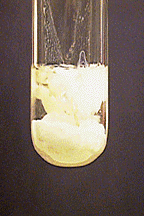
Mercury, Hg2+, Hg22+
Most common oxidation states: +1, +2
M.P. -38.87 o
B.P. 356.57o
Density 13.546 g/cm3
Characteristics: Mercury is one of the few liquid elements. It dissolves in oxidizing acids, producing either Hg2+ or Hg22+, depending on which reagent is in excess. The metal is also soluble in aqua regia ( a mixture of hydrochloric and nitric acids) to form HgCl42-.
Mercury(I) Ion, Hg22+:
Mercury(I) compounds often undergo disproportionation, producing black metallic mercury and mercury(II) compounds.
Characteristic reactions of Hg22+:
Chloride Ion:
Soluble chlorides, including hydrochloric acid, precipitate white mercury(I) chloride, also known as calomel:

Aqueous ammonia reacts with Hg2Cl2 to produce metallic mercury (black) and mercury(II) amidochloride (white), a disproportionation reaction:
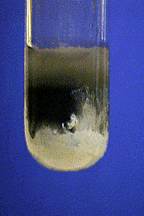
Aqueous Ammonia:
Aqueous ammonia produces a mixture of a white basic amido salt and metallic mercury:
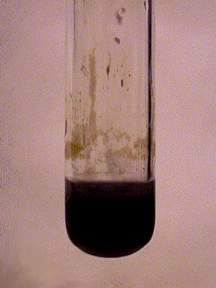
The precipitate is not soluble in excess aqueous ammonia.
Sodium Hydroxide:
Black finely divided mercury metal and yellow mercury(II) oxide (HgO) are precipitated by NaOH:
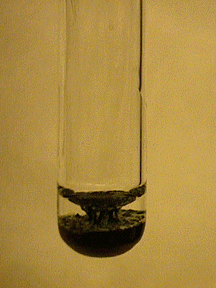
Reducing Agents:
Reducing agents, such as Sn2+ and Fe2+, reduce mercury(I) to the metal:
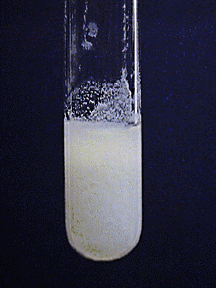
Consult an activity series or a table of reduction potentials for other possible reducing agents.
No Reaction:
SO42- (unless solutions are concentrated; solubility of mercury(I) sulfate is 0.06 g per 100 mL of water at 25oC)
Mercury(II) Ion, Hg2+:
Characteristic reactions of Hg2+:
Chloride Ion:
No reaction is visible, but Hg(II) will be present as [HgCl4]2-.
Aqueous Ammonia:
Aqueous ammonia produces white amido salts whose composition depends on the mercury(II) salt present in the solution:
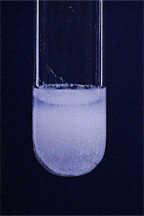
These salts are not soluble in excess aqueous ammonia, but do dissolve in acids:
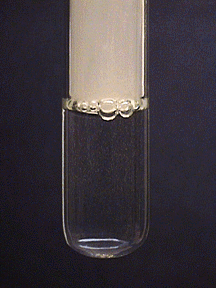
Sodium Hydroxide:
A yellow precipitate of HgO is produced by NaOH:
HgCl2(s) + 2OH-(aq) --> HgO(s) + H2O(l) + 2Cl-(aq)
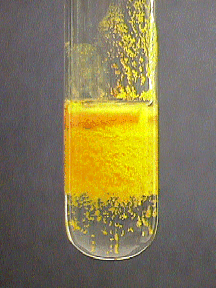
The mercury(II) oxide precipitate is insoluble in excess hydroxide but is soluble in acids:
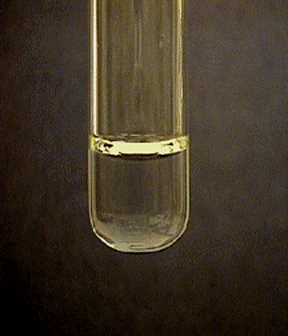
Hydrogen Sulfide:
Hydrogen sulfide precipitates black mercury(II) sulfide, the least soluble of all sulfide salts.
[HgCl4]2-(aq) + H2S(aq) <==> HgS(s) + 2H+(aq) + 4Cl-(aq)
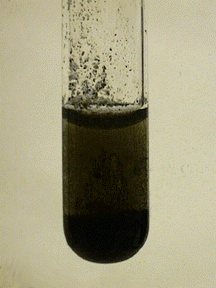
Mercury(II) sulfide is insoluble in 6 M HNO3 or 12 M HCl, even if heated. However, it is soluble in aqua regia (3:1 HCl:HNO3) and in hot dilute NaOH containing excess sulfide.
HgS(s) + S2-(aq) <==> [HgS2]2-(aq)
Tin(II) Chloride:
Tin(II) chloride reduces Hg(II) to Hg(I) or to metallic Hg, giving a white or gray precipitate:
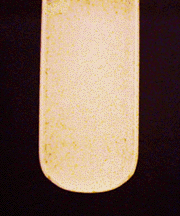
No Reaction:
SO42- (may precipitate as a mixed sulfate-oxide - a basic sulfate - HgSO4.2HgO)